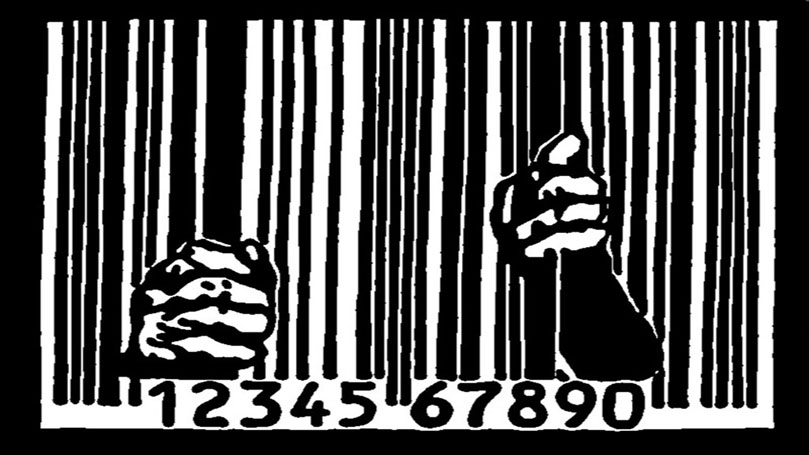
Editor’s note: The following is a response to the discussion question on class struggle, racial justice, and the road to socialism.
In our effort to bridge the gap between the liberation of the working class and the liberation of Africa Americans, we must determine 1) where the working class and African American people are most exploited, 2) how vulnerable these exploited peoples are, and 3) how Marxist-Leninist theory and CPUSA’s resources and platform may provide a framework for building or supplementing mass movements engaged in the quest for liberation.
Our first task is to determine where the movements for the liberation of the working class and African Americans most clearly overlap by asking the question: Where are workers and people of color most heavily exploited? Answer: In the prison-industrial complex.
To begin our understanding of this exploitation, we must recognize that the Thirteenth Amendment of the Constitution grants the state permission to enslave people.1
Next, we must recognize that there are over 870,000 incarcerated people working full-time for both state-owned businesses and in nonindustrial, in-prison housework within American prisons.2
The average prison worker makes between $0.33 and $1.41 per hour, working in state-owned business, and between $0.14 and $0.63 per hour, working in the nonindustrial, in-prison housework.3 Seven states, all located south of the Mason-Dixon Line, have policies in place that completely deprive workers of any wage.
Finally, every state in the Union has an incarcerated population that is disproportionately composed of African Americans and other people of color.4
These facts lead the reasonable observer to conclude that incarcerated workers are both extremely exploited and disproportionately African American.
Our second task is to determine how vulnerable these exploited workers are by asking the question: Do incarcerated workers have the ability to exercise their First Amendment right to organize their labor while in prison? Answer: The state generally denies and obstructs incarcerated workers’ attempts to organize.
In the 1970s, to protest the horrible working conditions within prisons, incarcerated workers formed a union. The state stepped in and, under the guise of maintaining security, prevented communication, face-to-face meetings, the collection of dues, and the distribution of literature.
The Supreme Court held that, “in the prison context,” an inmate has no First Amendment rights if the exercise of those rights is inconsistent with his or her status as a prisoner or if the exercise of those rights interferes with the legitimate penological objective of the corrections system.5
Unfortunately, the Supreme Court has continued to affirm that the First Amendment rights of prisoners may be limited, eliminated, or sanctioned by the state if the regulation is reasonably related to a “legitimate penological interest.”6
Prisons are enclaves of hyper-authoritarianism, where the state has given itself great deference in the pursuit of exploiting prison labor in the name of a legitimate penological interest.
Our final task is to determine how Marxist-Leninist theory and CPUSA’s platform may be used to build or supplement ongoing efforts to liberate incarcerated workers. This can be done by asking two questions.
The first question: What can we do to change the law? Answer: Petition the government to define their “legitimate penological interest.”
In other words, is their interest to rehabilitate criminals or to exploit workers and make money?
If their interest is rehabilitation, society must allow prisoners to organize for rehabilitative purposes, just as the state has traditionally allowed prisoners the free exercise of religion for rehabilitative purposes. There is no functional difference between organizing labor and organizing souls. Both acts alter the mind of the oppressed and liberate them from incarceration, and both acts allow for face-to-face meetings, the payment of dues, and the dissemination of literature. The state must bear the burden of explaining why they have a vested interest in procuring great profits for prison-industry above providing true rehabilitation to imprisoned peoples.
The second question: What resource or training should CPUSA make available to members and activists? Answer: Measure the rate of exploitation within the prison-industrial complex.
We can use Marxist-Leninist theory to measure the rate of exploitation of labor within different state prisons. By developing either a public database or publicly available training, we will be equipping grassroots activists with the information and capability of showing the exploitation of the working class within prisons for the benefit of the capitalist class. This framework of calculating exploitation will allow our movement to show activists, who will in turn show the masses, how “rehabilitation” within the American prison industry is a pretext for that industry’s real motive: generating astronomical profits for the capitalist class at the expense of the most vulnerable workers and people in the nation.
Notes
1. “Neither slavery nor involuntary servitude, except as punishment for crime whereof the party shall have been duly convicted, shall exist within the United States, or any place subject to their jurisdiction.” U.S. Constitution, Amendment XIII, Section 1.
2. Fink, Eric M.“Union Organizing & Collective Bargaining for Incarcerated Workers.”52 Idaho L. Rev. 953 (2016).
3. Sawyer, Wendy.“How much do incarcerated people earn in each state?” Prison Policy Initiative (2017).
4. Nellis, Ashly.“The Color of Justice: Racial and Ethic Disparity in State Prisons.” The Sentencing Project (2016).
5. Jones v. North Carolina Prisoners’ Labor Union, 433 U.S. 119, 129 (1977).
6. See Turner v. Safley, 482 U.S. 78 (1987); Shaw v. Murphy, 532 U.S. 223 (2001).
7. See “The Rate of Exploitation,” Tricontinental: Institute for Social Research. Notebook No. 2 (2019).
Image: Julian Kopald, Creative Commons, Public Domain Mark 1.0.


 Join Now
Join Now